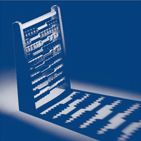Background
The machinery of the tax system is largely contained in a law which is now almost 50 years old – the Taxes Management Act 1970 (TMA 1970) – and was written before the automation of many of HM Revenue & Customs (HMRC) functions. This includes the rules surrounding the issuing of a notice to file a tax return and the issuing of automatic penalties.
The law has recently been changed to ensure that certain decisions are no longer required to be made by an HMRC officer but can instead be performed automatically by the HMRC computer. The unusual aspect to this law change is that it will apply retrospectively to all notice and penalties issued as well as those issued on or after 31 October 2019.
Detail
The change in the law has arisen following an increasing number of challenges, many of which were decided in favour of the taxpayer, to the issuing of notices and penalties by HMRC. The basis of the taxpayer’s argument against the issuing of these notices and penalties tended to be that they were raised automatically by a computer rather than by a HMRC officer as required under tax legislation. HMRC has now effectively closed this loophole and brought the legislation in line with modern practice.
Where a penalty had been imposed, say for the late filing of a tax return, and was challenged by the taxpayer, some tribunal judges have looked very closely at the evidence presented by HMRC to the tribunal. In some cases they have asked which HMRC officer made the decision to issue the notice to the taxpayer, given that was what the law previously required. In order for the notice to file a tax return to be valid, it must have be given to the taxpayer by “an officer of the Board” (meaning HMRC) and judges generally expected this to be signed by a named HMRC officer. In many cases HMRC’s evidence would consist of:
- A generic copy of the notice to file letter;
- An extract from the HMRC computer records to show when the notice was issued; and
- A record of the taxpayer’s address at the relevant date (although this may be wrong).
The judge would then be expected to infer from these documents that the notice had been sent by an officer to the taxpayer at the appropriate time and to the correct address. Given the notices were often issued automatically by the HMRC computer, many judges were refusing to confirm this and instead cancelled the disputed penalties.
The increasing transition towards the digitalisation of HMRC’s tax administration has required the change in the law so that HMRC’s powers can reflect this fundamental change in the use of technology, and ensure HMRC’s use of automated processes has a firm legal footing.
The surprising aspect for many is that the change in law will apply retrospectively and not just following its introduction from 31 October 2019, thus removing the argument previously used by many to avoid penalties being applied. Therefore, with this loophole now being closed, those receiving such notices or penalties will instead have to go back to considering whether they have grounds for an appeal based on a ‘reasonable excuse’.
For those receiving a notice to file a return or penalties it is important that they act upon the notice within the required time frame, which for notices to file a return is the later of the normal filing date or 3 months after the notice to file is issued.
If you have received a notice to file a return or a penalty notice and have any questions or would like assistance in dealing with HMRC please contact our Assistant Tax Manager, Jamie Poulton.
To see our other news items please visit our Muras Baker Jones – Blog.



